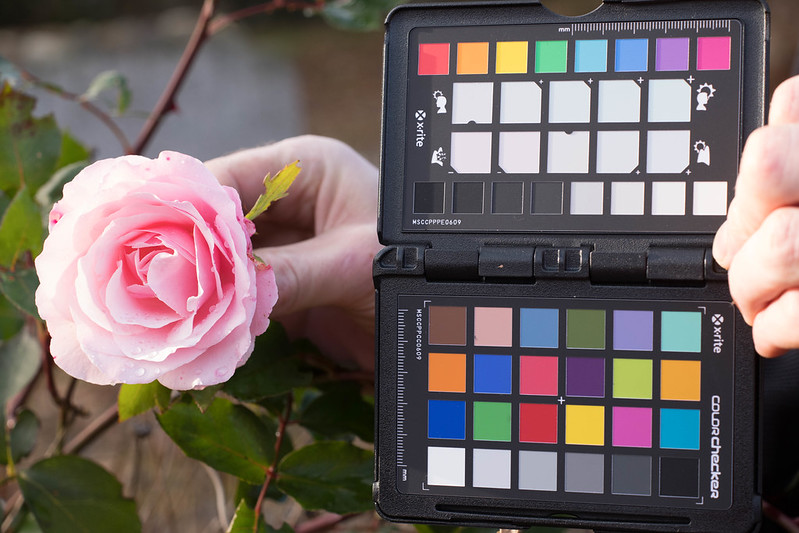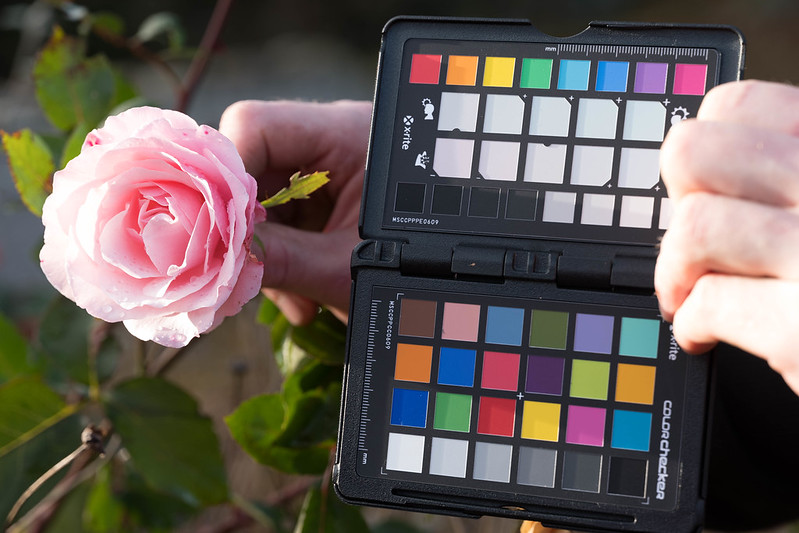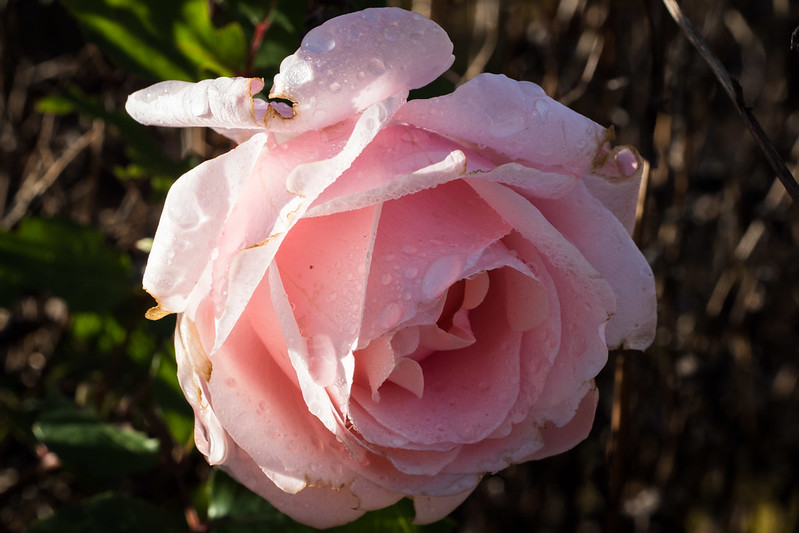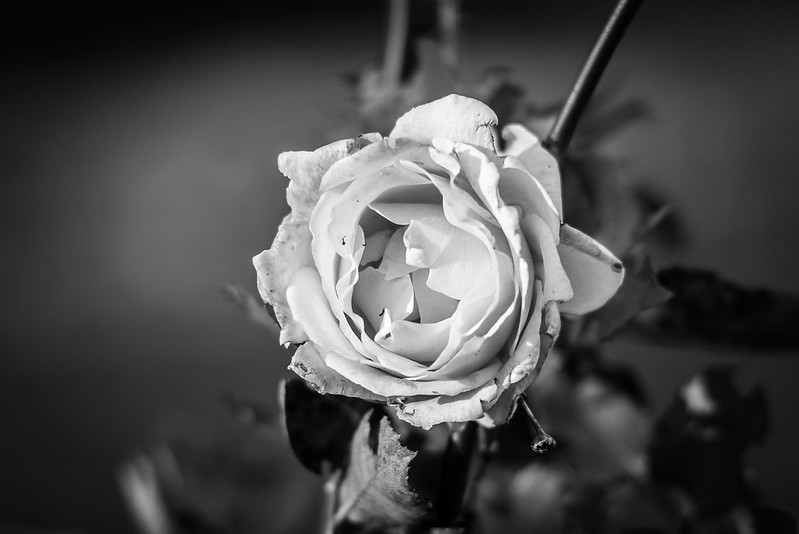Robert Campbell
Well-known member
The original rose is long gone; I had a go with another bloom today; it was very cloudy and dull.
The upper is the CL with 60mm macro, the lower is the SL with the 24-90. Both in Adobe 6.14, both Adobe Standard; no adjustments:
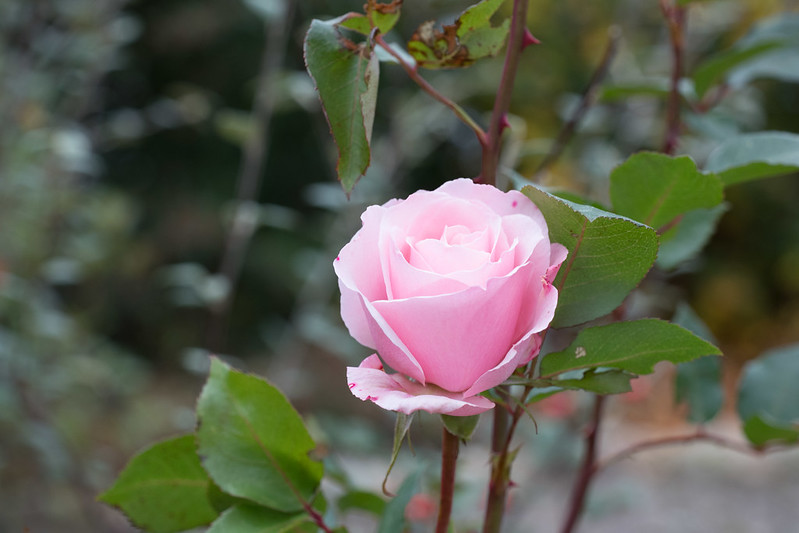
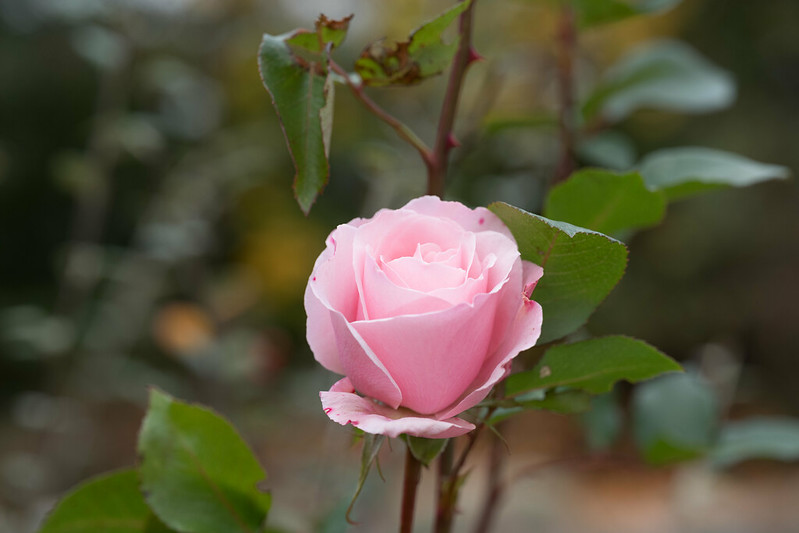
CL auto colour temp is 4300º, the SL auto temp is 5250º
The CL is, to my eye, the more accurate; the SL has a sort of orange tinge to it. I looked very closely at the rose. The tips of the outermost, oldest petals have a faint bluish tinge, the others don't. There are a few darker red spots.
For amusement, I also tried the M240 with 90mm apo Summicron. It doesn't focus as close, so this is a crop. Auto colour temp is 5100º

FWIW, the SL and the M240 are in Adobe rgb colour space; I can't find a setting for this in the CL.
Both the CL and SL would, IMO, with a little gentle tweaking be very satisfactory; the CL does seem in it's raw state to be a bit 'cold'. The M240 looks as if it was glorious sunshine which it certainly wasn't.
The upper is the CL with 60mm macro, the lower is the SL with the 24-90. Both in Adobe 6.14, both Adobe Standard; no adjustments:


CL auto colour temp is 4300º, the SL auto temp is 5250º
The CL is, to my eye, the more accurate; the SL has a sort of orange tinge to it. I looked very closely at the rose. The tips of the outermost, oldest petals have a faint bluish tinge, the others don't. There are a few darker red spots.
For amusement, I also tried the M240 with 90mm apo Summicron. It doesn't focus as close, so this is a crop. Auto colour temp is 5100º

FWIW, the SL and the M240 are in Adobe rgb colour space; I can't find a setting for this in the CL.
Both the CL and SL would, IMO, with a little gentle tweaking be very satisfactory; the CL does seem in it's raw state to be a bit 'cold'. The M240 looks as if it was glorious sunshine which it certainly wasn't.

